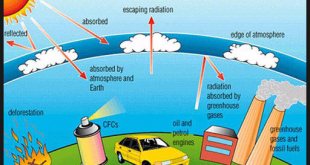POLYMERS
Polymers can be defined as the high molecular mass macromolecules that are formed due to the repetition of the basic unit, monomer.
MONOMER
The unit molecules that combines with each other to form a polymer.
POLYMERISATION
The process of formation of polymers by the repeated addition of the monomers is known as the polymerization.
CLASSIFICATION OF POLYMERS
- On the basis of the molecular forces: They are categorized as-
- Elastomers: These polymers are held together by very weak Vanderwal forces and thus show very less elasticity. For eg. Buna-S
- Fibers: These polymers are held together by strong hydrogen forces, thus, their elasticity is quite high in comparison to the elastomers. For eg, Nylon
- Thermoplastics polymers: these polymers have intermolecular forces of attraction between elastomers and fibers. For eg, Polystrene
- Thermosetting polymers: These polymers are quite hard and rigid, thus, they cannot be remoulded into a new shape. For eg, Melamine
- On the basis of source of availability: They are categorized as:
- Natural Polymers: These polymers exists naturally and are found in both plants and animals. For eg, Starch and glycogen.
- Semi-synthetic Polymers: These polymers are prepared by some modification in the natural polymers by artificial means. For eg, Rayon.
- Synthetic Polymers: They are 100 % man made polymers, synthesized in laboratories. For eg, Teflon.
- On the basis of structure: They are categorized as:
- Linear Polymers: In these polymers, monomers are arranged in the linear fashion to form linear or straight chains. For eg, Polyester.
- Branched chain Polymers: They are the linear chain polymers with some branches. For eg, Glycogen.
- Cross-linked Polymers: These are the polymers formed by various linear polymers connected to each other by the covalent bonds. For eg, Glyptal.
- On the basis of mode of polymerization: They are categorized as-
- Addition Polymers: They are formed by the repeated addition of either the same monomers (Homopolymers) or the different monomers (Copolymers). For eg, Polythene is a homopolymer and Buna-S is a copolymer.
- Condensation Polymer: These polymers are formed by the repeated condensation reaction of different bifunctional and trifunctional monomers with the elimination of small molecules like water etc. For eg, Nylon 6, 6.
Q.1. Natural polymer is:
- Bakelite
- Melamine
- Teflon
- Starch
Ans. d
Q.2. On the basis of structure, polymers are:
- Linear
- Branched
- Cross-linked
- All
Ans. d
Q.3. Synthetic polymer is:
- Amylopectin
- Glycogen
- Teflon
- Starch
Ans. c
Q.4. Thermosetting polymers can be:
- Moulded
- Remoulded
- Both
- None
Ans. d
Q.5. Forces present in the elastomers are:
- Vanderwaal forces
- Hydrogen bond
- Ionic bond
- Amide bond
Ans. a
Q.6. Forces present in the fibers are:
- Vanderwaal forces
- Hydrogen bond
- Ionic bond
- Amide bond
Ans. b
 IT2EDU Empowering Education Through Technology
IT2EDU Empowering Education Through Technology

